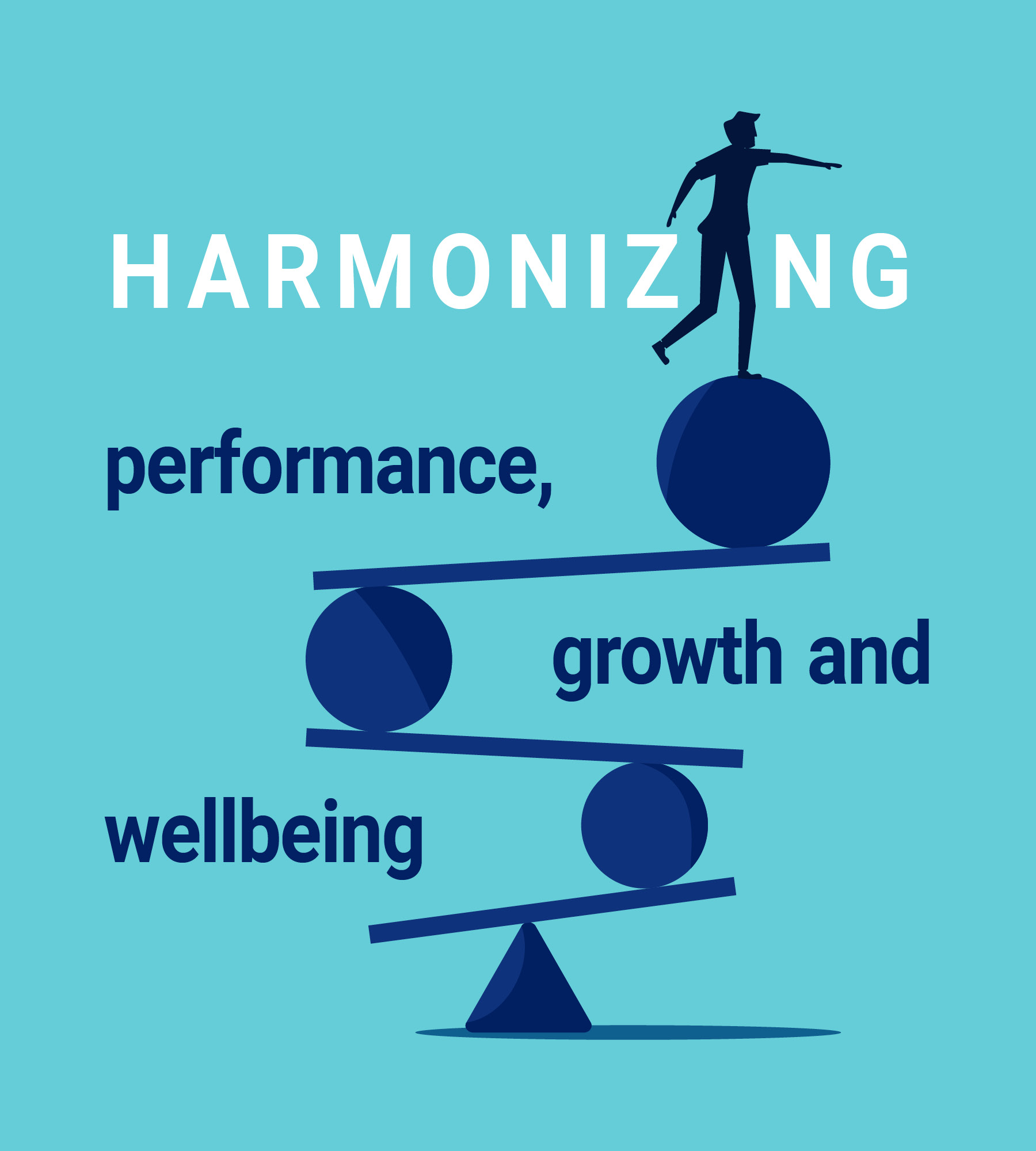Language
You can read the magazine in one of the following languages
Many leaders feel forced to choose between performance, growth and wellbeing, believing that pressing on all three pedals at the same time is impossible. But focusing on just one or two of these pedals creates serious challenges.
When you have growth and performance, you create acceleration – but without wellbeing, that acceleration becomes unsustainable. On the flip side, when you have growth and wellbeing, there’s evolution, but without performance the organization becomes unviable. You can innovate and grow, but if performance doesn’t deliver results, your business won’t survive.
And finally, when you have performance and wellbeing, you create consistency – but without growth, the organization remains underdeveloped and stagnation sets in. In today’s fast-moving world, staying still is not an option.
The key is learning how to press all three pedals – performance, growth and wellbeing – in sync to create sustainable success. Here’s how you can maintain that balance.
Clean feedback drives performance, but it’s also crucial for supporting growth and wellbeing. Feedback should be clear, direct and free from bias or hidden agendas. It should create clarity for the receiver, offering a clear understanding of what’s working, what needs to improve and what actions to take next.

The key is learning how to press all three pedals – performance, growth and wellbeing – in sync to create sustainable success.
Feedback isn’t a weapon and it’s not a lecture. Clean feedback is a discovery tool – it opens the door for a curious conversation that helps people develop. It supports clear growth by highlighting where people can improve, stretch and learn. But it also plays a vital role in wellbeing. Feedback that’s clean and free of judgment reduces anxiety, allowing people to feel secure in their roles rather than be triggered by vague or emotionally charged criticism.
Delivering clean feedback ensures that your organization performs well by keeping everyone on the right track, grows steadily through continuous learning and maintains a positive, supportive environment where people feel good and ready to get better.
When roles are unclear, confusion and stress follow. Without a clear understanding of their responsibilities, people waste energy on tasks outside their scope and performance suffers. Role clarity ensures that everyone knows exactly what is expected of them and how their work contributes to the bigger picture.
Role clarity directly boosts performance by enabling people to focus on their key responsibilities without getting bogged down in ambiguity. It also promotes growth because individuals can see where they need to develop and grow within their defined role.
For wellbeing, role clarity reduces stress and provides stability – team members feel secure when they know exactly where they stand and what is required of them.
By removing ambiguity, role clarity allows your organization to perform at its best, grow with intention and ensure people feel secure and empowered in their work.
Great relationships form the backbone of a healthy organization. When trust and communication flow freely between team members, performance improves. People collaborate more effectively, share ideas and feel comfortable taking risks, which ultimately drives stronger results.
Strong relationships also fuel growth. When people feel safe with one another, they’re more willing to seek feedback, ask for help and explore new opportunities for development. They take risks knowing they’ll be supported, which fosters innovation and learning.

Through practices like clean feedback, role clarity, building strong relationships and embedding wellbeing into daily work, you can create an organization where people feel good, do well and get better every day.
In terms of wellbeing, great relationships reduce stress by providing a network of support. People feel connected and secure when they know they can rely on their colleagues and leaders. These connections provide emotional and professional safety, helping individuals manage the challenges they face.
By focusing on building and maintaining strong relationships, you support your organization’s performance, fuel its growth and ensure your people feel well supported.
Built-in wellbeing is about creating an environment where wellbeing is woven into the everyday operations of your organization. It’s not a perk or an afterthought, it’s foundational. Every time you make a demand on your people, you’re making a withdrawal from their wellbeing.
Without regular deposits, like flexible working conditions, mental health support and opportunities to recharge, your organization risks burnout.
When wellbeing is built into the culture, performance becomes sustainable. People have the energy and resilience to meet their goals without sacrificing their health. Wellbeing also promotes growth. When individuals feel well supported, they’re more open to taking on new challenges and developing their skills. They’re not just working, they’re thriving.
Without wellbeing, performance might hit its targets in the short-term, but the approach becomes unsustainable over time. Growth without wellbeing leaves people underdeveloped and struggling to keep up. By embedding wellbeing into how your organization operates, you ensure people feel good, do well and are able to get better over time.
Leaders often think they have to sacrifice one aspect of success – performance, growth or wellbeing – to achieve the others. But that’s a false trade-off. By pressing all three pedals together in the right balance, you create an organization that performs well, grows continuously and supports the wellbeing of its people.
Through practices like clean feedback, role clarity, building strong relationships and embedding wellbeing into daily work, you can create an organization where people feel good, do well and get better every day.

Louise Gilbert
Contributor Collective Member
Louise Gilbert is Australia’s leading facilitator of change and leadership. She is the Founder and Director of Louise Gilbert, an organization that delivers change and leadership coaching to organizations, which facilitate business excellence. Highly qualified, with a career in change management spanning two decades, Louise has advised hundreds of Australia’s top organizations. ‘Make Work Work for You’ is her first book. For more information visit https://louise-gilbert.com/
